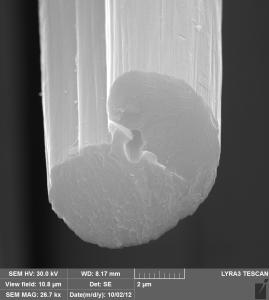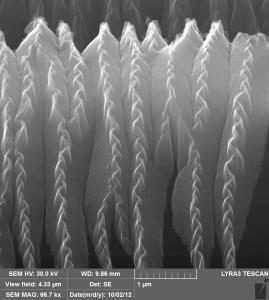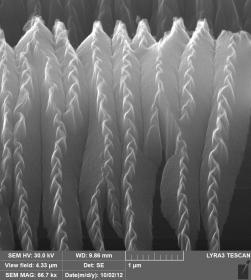A group of SINP MSU scientists in cooperation with colleagues from JSC "NIIgraphit" has studied the structure of the surface layer of carbon-carbon composites based on carbon, in particular, on polyacrylic fibers. It was found that high-dose irradiation of composites at high temperature leads not only to dissaperance of anisotropy of polyacrylic fibers' shell structure, but also to their corrugation.
High-dose irradiation with Neon and Argon ions was conducted by means of mass-monochromator of SINP MSU. Samples of different carbon-carbon composites were used as targets.
It is expected, that strength of adhesion between polyacrilic fibers and carbon and ceramics matrices can be improved essentially due to corrugation of fibers surface structure. It largely predetermines increasing of operational temperature of carbon-ceramics composites up to 25000C.
For reference, up to now operational temperature of carbon-ceramics composites was about 17000C.
"We expect that corrugated structure of carbon fiber surface will not change mechanical strength of composite. Final conclusions will be given by experiment," - Anatoly Borisov, Professor, DSc., leading researcher told us.
Currently carbon-carbon and carbon-ceramics composites based on carbon fibers are widely used as energy-loaded and thermally-stressed elements of the elements of nuclear reactors, thermal-nuclear devices and aerospace instruments.


Left - primary polyacrylic fiber, right - polyacrylic fiber after its irradiation with Argon ions beam with energy of 30 keV at 400°С.

